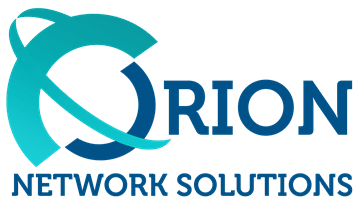Can Your IT Firm Help With a Written Information Security Plan? Essential Factors to Consider
In today’s digital landscape, businesses need to prioritize cybersecurity. A key component of an effective cybersecurity strategy is having a Written Information Security Plan (WISP) in place. A WISP outlines how a company manages and protects sensitive data, ensuring that clients and employees are safeguarded from potential security breaches.
IT firms must understand the ins and outs of developing a comprehensive and robust WISP. IT firms have the expertise and resources to help businesses create a plan tailored to their specific needs, which is crucial in securing sensitive data and preventing breaches. By collaborating with an IT firm, businesses can enhance their information security measures and achieve a strong cybersecurity posture.
Key Takeaways
- A Written Information Security Plan is fundamental to a strong cybersecurity strategy.
- IT firms have the expertise to help businesses create tailored, effective security plans.
- Collaborating with an IT firm leads to enhanced information security measures and prevention of data breaches.
Understanding Information Security Plans
Definition and Purpose
In today’s digital world, safeguarding sensitive information is paramount. As such, businesses must implement a Written Information Security Plan (WISP). A WISP is a formal document outlining the administrative, technical, and physical safeguards put in place to protect client data. This comprehensive security strategy helps protect tax professionals and their clients, as mandated by institutions like the IRS.
Key Components of an Information Security Plan
A well-designed WISP should include these key components:
- Introduction: This section provides an overview of the WISP, states its purpose, and specifies the types of sensitive information the plan is designed to protect.
- Risk Assessment: Identifying and assessing possible risks, vulnerabilities, and threats to the protected information is crucial. This helps determine which safeguards to implement and prioritize.
- Inventory of Hardware and Software: Maintain a list of all hardware and software used by the business to manage, store, or process sensitive information.
- Safety Measures: Enumerate the administrative, technical, and physical safeguards to protect sensitive data, such as encryption, firewalls, and secure data deletion procedures.
- Implementation Clause: This section outlines the policies and procedures for employee training and regular updates or revisions to the WISP.
- Incident Response Plan: In case of a breach or compromise of sensitive information, a plan should be ready to respond immediately and effectively. This could include notifying affected parties and containing the situation.
- Record Retention Policies: Develop and implement a policy for retaining and disposing of sensitive information in compliance with legal and industry requirements.
By establishing a detailed WISP, companies can effectively protect sensitive information and reduce the risks associated with data breaches.
Role of IT Firms in Information Security
Assessment of Current Security Posture
As IT firms, we first evaluate the current security posture of a client’s organization. We identify and analyze the risks and vulnerabilities associated with their data and systems. Our assessments can help clients understand the effectiveness of their existing security controls and where improvements may be needed. By pinpointing potential weaknesses, we can focus on implementing tailored solutions to safeguard sensitive information.
Collaborative Planning
After assessing the security posture, we plan collaboratively with our clients to develop a comprehensive Written Information Security Plan (WISP). We take into account the unique requirements of their business and industry regulations. We ensure that clients clearly understand the plan and can achieve buy-in from their team, which is essential for effective implementation. We aim to create a robust, proactive, adaptable framework to the ever-evolving threat landscape.
Here are the steps we follow during collaborative planning:
- Identify the scope and boundaries of the WISP
- Determine the relevant business processes and stakeholders
- Evaluate potential risk scenarios and prioritize them based on impact
- Discuss possible mitigation strategies and incident response plans
Policy Development
As part of the WISP development process, we assist clients in crafting clear and easily understandable policies. These policies help delineate the roles and responsibilities of employees, third-party vendors, and other relevant parties. We focus on creating a pragmatic and actionable approach, ensuring policies align with best practices and industry standards.
Key elements of policy development include:
- Access control measures
- Data classification and handling procedures
- Technical and administrative security controls
- Incident response and recovery strategies
- Employee training and awareness programs
Implementation Support
Once the WISP and its corresponding policies are developed, we provide ongoing client support during implementation. We engage in the configuration of network systems, installation of security software, and the establishment of monitoring mechanisms. By continually tracking and assessing the effectiveness of the WISP, we help ensure that clients maintain a strong security posture that protects their business and complies with applicable regulations.
IT firms are crucial in creating, implementing, and maintaining a Written Information Security Plan. Through a collaborative approach, we assess security risks, develop tailored policies, and provide ongoing support for businesses, safeguarding their sensitive information and ensuring compliance with industry standards.
Developing the Written Information Security Plan
Writing the Security Plan
When developing a Written Information Security Plan (WISP), we first begin with creating an introduction that provides an overview of the plan and its purpose. This should specify the sensitive information the plan is designed to protect. Next, we perform a risk assessment to identify potential security threats, assess their likelihood, and determine their potential impact on our business. Some key elements that should be included in a WISP are:
- Administrative safeguards
- Technical safeguards
- Physical safeguards
By incorporating these elements, we ensure that our plan provides comprehensive protection for our client data.
Customization to Business Needs
Every business has unique needs, so we tailor our WISP to meet each organization’s requirements. We consider the company’s size, type, and industry while developing the plan. Customization ensures that the WISP is effective and relevant, addressing each business’s risks and vulnerabilities.
To achieve this customization, we’ll:
- Define the WISP objectives, purpose, and scope
- Identify responsible individuals within the organization
- Adjust the plan based on the findings of the risk assessment
- Develop incident response procedures specific to the business
Ensuring Compliance and Legal Requirements
Lastly, when developing a WISP, we must adhere to all applicable compliance and legal requirements, including those put forth by the IRS for tax preparers and accountants. To ensure conformity with these regulations, we will:
- Review industry-specific guidelines and best practices
- Regularly update the WISP to keep up to date with changing laws and regulations
- Train our employees on the appropriate handling of sensitive data
- Perform periodic reviews and audits of our security measures
By adhering to compliance and legal requirements, we protect our client’s sensitive information, help maintain our company’s reputation, and avoid potential penalties.
Training and Staff Engagement
Employee Training Programs
A well-designed Written Information Security Plan (WISP) focuses on technology and the human elements of information security. Implementing an effective Employee Training Program is a crucial component of a WISP. Training should cover essential topics such as:
- Recognizing phishing emails and social engineering attacks
- Creating and managing secure passwords
- Securely disposing of sensitive data
- Reporting suspicious activities or security incidents
We recommend regularly conducting training sessions and including refresher courses to keep your employees up-to-date with cybersecurity threats and best practices. Additionally, providing access to online resources and educational materials can further strengthen their knowledge base.
| Training Topics | Frequency |
|---|---|
| Recognizing phishing emails | Biannual |
| Managing secure passwords | Annual |
| Secure data disposal | Biannual |
| Reporting suspicious activities | As needed |
Promoting Security Culture
A comprehensive WISP aims to imbibe a security-first culture within the organization. This means that all employees, from top management to entry-level staff, prioritize information security in every aspect of their work. To promote a strong security culture, consider implementing the following practices:
- Leadership involvement: Engaging organizational leaders in security awareness and training initiatives helps set the tone and demonstrates management’s commitment to information security.
- Transparent communication: Open and transparent communication about security policies, procedures, and updates encourages employees to take personal responsibility for information security.
- Incentives and recognition: Rewarding staff for their efforts in identifying and reporting security incidents can motivate them to maintain a secure environment proactively.
By integrating training programs and fostering a security-first culture, we can strengthen our WISP and protect our clients’ sensitive information.
Continuous Monitoring and Updating
Plan Review and Maintenance
As IT professionals, we maintain and update our clients’ Information Security Plans. Regular review and maintenance are essential to ensure the plan remains relevant and effective. We follow a systematic approach to assess the current state of the information security plan, identify any gaps or areas for improvement, and make necessary updates. This process includes:
- Regularly scheduled reviews: We conduct periodic reviews of the information security plan to evaluate its effectiveness and ensure that it aligns with current industry best practices and standards.
- Incident-driven updates: In a security breach or incident, we analyze the event, determine the root causes, and make necessary updates to the plan to prevent similar occurrences.
- Changes in technology: As new technologies and systems are introduced into the organization, we evaluate the potential risks and update the plan accordingly to account for the new technology.
Adapting to Emerging Threats
The cybersecurity landscape continuously evolves, with new threats and vulnerabilities emerging daily. We proactively monitor and adapt to these emerging threats to protect our clients’ systems and data. Here’s how we address these challenges:
- Threat intelligence: We actively gather and analyze information about current and emerging threats, enabling us to stay informed and prepared to counter potential cyberattacks.
- Continuous monitoring: By conducting ongoing surveillance and analysis of our clients’ IT infrastructure, systems, and applications, we can detect potential security threats and vulnerabilities before they cause harm (source: Secureframe).
- Regular updates and patches: Applying timely updates and patches to software, systems, and devices is crucial to ensuring that vulnerabilities are addressed and that the organization stays protected against potential cyberattacks.
- Employee training: We understand the importance of raising awareness about emerging threats and providing ongoing employee training. Through training, our clients’ staff can learn how to identify and respond to potential risks and adopt secure behaviors that minimize the chances of a cybersecurity incident.
By continuously monitoring and updating our clients’ information security plans, we strive to provide them with robust and effective protection against current and emerging cyber threats.
Benefits of a Professionally Supported WISP
Expertise and Experience
When engaging an IT firm to help with a Written Information Security Plan (WISP), we can expect to leverage their expertise and experience in security-related matters. They stay updated on industry threats, new technology, and best practices. With a professional firm, we can rest assured that our WISP will incorporate these updates as they arise.
Working with them provides access to specialized skills in protecting sensitive information, implementing appropriate safeguards, and handling data breaches:
- Risk Assessment
- Securing Networks
- Employee Training
- Incident Response Planning
Thus, our WISP benefits from their experience, reducing the chances of security vulnerabilities and risks.
Cost-Effectiveness
Investing in a professionally supported WISP can be cost-effective for our organization. Their assistance in navigating regulations like the IRS Safeguards Rule and state-specific data protection regulations will help prevent potential non-compliance penalties. This investment can be viewed as a step towards protecting our business from financial losses due to security breaches or regulatory fines.
| Cost Factor | With IT Firm | Without IT Firm |
|---|---|---|
| Penalties & Fines | Minimal chances | High chances |
| Risk of Data Breach | Lower | Higher |
| Recovery Costs | Managed | Expensive |
Time Savings
Time is a crucial factor when implementing a WISP. A reliable IT firm can significantly expedite the process. They will work with us to:
- Evaluate our current security posture
- Identify gaps in our infrastructure
- Develop a comprehensive, tailored WISP
Doing this in-house could be time-consuming and resource-intensive. Outsourcing to seasoned experts helps us focus on our core competencies while having the confidence that our WISP is in capable hands.
How Orion Networks Can Help Ensure You Have The Right WISP
At Orion Networks, we understand the importance of having a strong Written Information Security Plan (WISP) for your business. Our team of experts is dedicated to helping you develop a robust plan that fits your organization’s unique requirements.
First, we help identify the critical components of your WISP. These include understanding the Personally Identifiable Information (PII) you handle, the necessary security measures, and the relevant legal regulations you must comply with, such as the FTC Safeguards rule and the IRS requirements for tax filers. Our approach ensures that your WISP is comprehensive and aligns with industry best practices.
Next, we assist in creating a tailor-made plan addressing various security aspects like:
- Physical Security: Policies to safeguard equipment, paper records, and workspaces.
- Electronic Security: Procedures to protect digital data, including access control and encryption.
- Employee Training: Education on security awareness, responsibilities, and incident response.
We understand that adapting to new security policies might be challenging for your staff. Therefore, we offer guidance on implementing the WISP across your organization effectively. Our approach ensures a smooth transition for your employees and minimizes potential disruptions.
We provide ongoing support and periodic reviews to keep your WISP up-to-date and effective. As technology evolves and your business grows, we help you adjust your WISP to maintain proper compliance and optimal security.
In summary, our expertise at Orion Networks ensures that your business has the right WISP in place, which is crucial for protecting sensitive information and minimizing the risks associated with cyber threats.
Thanks to Lisa and her team at Progressive Computer Systems for their help with this content.













